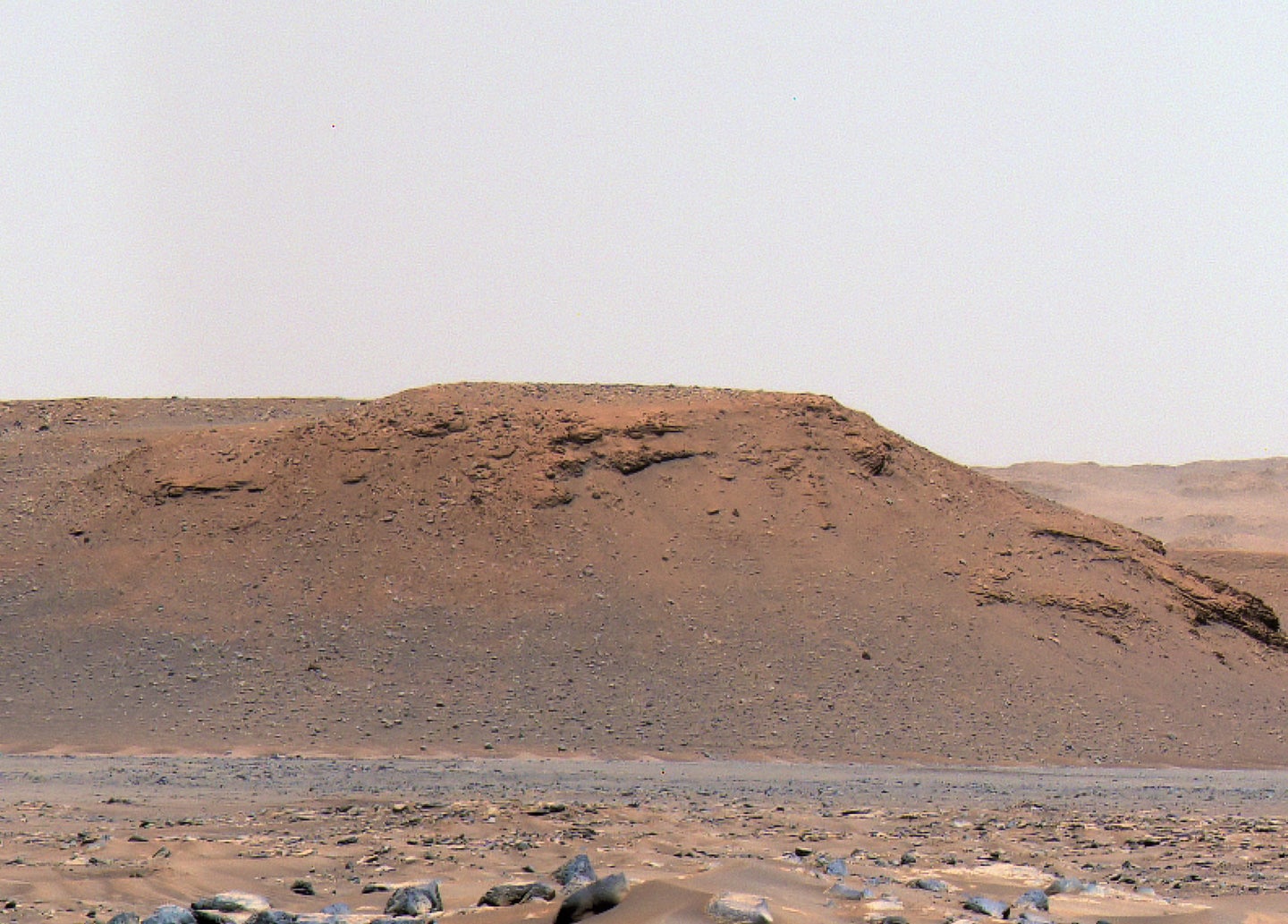Signs Of Past Chemical Reactions Detected On Mars
The Perseverance rover landed in the Jezero crater in 2021 and has already found some clues to the planet's past.

In February 2021, the Perseverance rover reached a crater that was once a river delta on Mars. The 10 foot-long rover with seven instruments on board is currently exploring the Jezero crater, on a mission that partially includes gathering samples that may hold signs of ancient microbial life on the Red Planet. It is the first mission to collect and cache Martian rock and regolith, the loose unconsolidated rock, glass, and mineral fragments in the soil. It will also pave the way for human exploration of Mars, but first we need to more about Martian geology, its past climate, and the planet’s chemistry.
In a study published today in the journal Science, a team of scientists from around the world present evidence of past chemical reactions between liquid water and carbon-compounds on Mars.
“We believe we have found these kinds of liquid water environments and organic compounds together. That’s sort of the limit to how we can describe what we call habitability,” Eva Linghan Scheller, the study’s first author and a post-doctoral fellow at Massachusetts Institute of Technology (MIT), tells PopSci.
[Related: NASA’s Perseverance rover is on a hunt for microbes on Mars.]
The team used NASA’s Scanning Habitable Environments with Raman and Luminescence for Organics and Chemicals (SHERLOC) instrument to conduct deep ultraviolet Raman and fluorescence spectroscopy of three rocks within the crater. The Raman spectrometer and is designed to look for the signs of liquid water and organic compounds. The testing detected evidence of these chemical reactions which in turn provides evidence of aquatic environments that used to exist on Mars. The sulfate-perchlorate mixture found in the rocks, likely formed by later changes to the rocks by brine.
“In the study, we talk a lot about the liquid water interaction with igneous rocks, which are basically crystallized magma,” Scheller adds. “What was most surprising about that was the really weird chemistry of some of the evidence that we have from these liquid water environments, which are sodium chloride sulfate mixtures.”
NASA first found carbon-based, or organic, matter on Mars in 2014, but this discovery explains the percholorate (a combination of chlorine and oxygen) that formed as a briny water that percolated through red Martian rock.
“What’s really interesting is that materials like these are extremely soluble. If they get into contact with any liquid water, they will basically dissolve,” Scheller explains. “So the last stage that the rock was in contact with liquid water was a last gasp of water on Mars.”
[Related: Happy Mars-iversary, Perseverance.]
To get an idea of when this last gasp of Water on Mars occurred, scientists will have to examine samples in the lab. Martian rock samples are due to arrive on Earth sometime in 2033 according to NASA and the European Space Agency (ESA).
Perseverance is exploring the Jezero Crater because it is believed to have the best chance for providing solid samples. About 3.5 billion years ago, the Jezero Crater was home to an ancient delta, or a fan-shaped area once at the convergence of a Martian river and a lake. Perseverance is looking at the delta’s sedimentary rocks, which formed when particles of various sizes settled in the once-watery river. The rover explored the floor of the crater during its first science campaign, in 2021, and found igneous rock which form deep underground from magma or during volcanic activity at the planet’s surface.
Going forward, one thing is certrain. Studying the rocks for the secrets of Mars’ colorful past will be keeping scientists busy.
“All the different missions have actually found this extremely weird chemical chlorides all over the Martian surface,” says Scheller. “There’s going to be a big mystery that people are going to be digging into, in the next decade or so.”
Publication: Eva L. Scheller, et al., Aqueous alteration processes in Jezero crater, Mars−implications for organic geochemistry, Science (2022). DOI: 10.1126/science.abo520
Original Story Source: Massachusetts Institute of Technology

 Alerts Sign-up
Alerts Sign-up